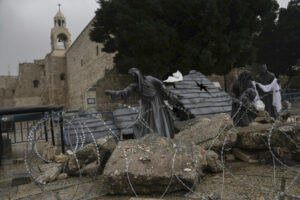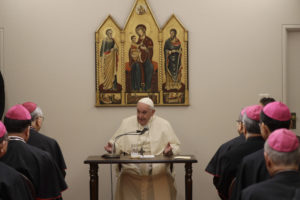Images of “the Christ”
The reaction to the initial image of Jesus on our page — a self-portrait by Wilhelm von Gloeden posing as Jesus — deserves some comment. We will post a variety of images of Jesus on the page to demonstrate how various cultures have imagined him in their own image. None of these images are of […] This is Part of the "The Truth About Jesus" Dig seriesThe reaction to the initial image of Jesus on our page — a self-portrait by Wilhelm von Gloeden posing as Jesus — deserves some comment. We will post a variety of images of Jesus on the page to demonstrate how various cultures have imagined him in their own image. None of these images are of Jesus of Nazareth. Such an image would be impossible to craft (and there are no Polaroids waiting in the desert sands to be discovered). The fundamental question, of course, is, “Does it matter what Jesus actually looked like?”
These images are probably more appropriately referred to as images of “the Christ.” “The Christ” is not at all a historical person but instead is the idealization of and projection of how we experience Jesus. If a true image of the historical Jesus were ascertainable it would be a serious drag on the creativity of the Christian Church. So long as no one makes a claim that his or her representation of the Christ is the only legitimate representation we can continue to enjoy and learn from the variety of perspectives that has given us new images across the ages.
Another consistent question is whether or not the historical Jesus is historical. Did Jesus actually exist? The progressive perspective holds that Jesus did not make much of an impression on the history of his time. His followers probably numbered only in the hundreds for the first few years after his death. Thus, the lack of historical evidence is not necessarily evidence of his nonexistence but of his limited impact. It is true that some of the myths that evolved in the wake of his death drew from the Hellenistic environment that dominated the times. For example, the crucifixion is rooted in the Greek notion of the noble death. Certainly the infancy narratives are parallels to several popular narratives of Roman and Greek heroes who were also said to be divinely begotten.
Paul was converted to the Christ branch of early Christianity (as opposed to the “teachings” branch or Jesus people), for whom the death and resurrection were the center of their message and theology. So it is not surprising that Paul makes little or no reference to Jesus’ earthly ministry. As the various branches of early Christianity evolved, they each “remembered” the Jesus that was important to their community. Thus the historical Jesus became fragmented into oblivion with a piece here and a piece there. The work of reconstruction continues to this moment among scholars like those in the Jesus Seminar.
Your support matters…Independent journalism is under threat and overshadowed by heavily funded mainstream media.
You can help level the playing field. Become a member.
Your tax-deductible contribution keeps us digging beneath the headlines to give you thought-provoking, investigative reporting and analysis that unearths what's really happening- without compromise.
Give today to support our courageous, independent journalists.






You need to be a supporter to comment.
There are currently no responses to this article.
Be the first to respond.